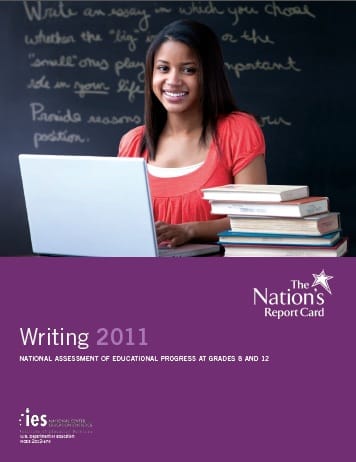Traditionalists cringe, tech buffs rejoice: This latest NAEP writing assessment for grades eight and twelve marks the first computer-based appraisal (by the “nation’s report card”) of student proficiency in this subject. It evaluates students’ writing skills (what NAEP calls both academic and workplace writing) based on three criteria: idea development, organization, and language facility and conventions. Results were predictably bad: Just twenty-four percent of eighth graders and 27 percent of twelfth graders scored proficient or above. Boys performed particularly poorly; half as many eighth-grade males reached proficiency as their female counterparts. The use of computers adds a level of complexity to these analyses: The software allows those being tested to use a thesaurus (which 29 percent of eighth graders exploited), text-to-speech software (71 percent of eighth graders used), spell check (three-quarters of twelfth graders), and kindred functions. It is unclear whether use of these crutches affected a student’s “language facility” scores, though it sure seems likely. While this new mechanism for assessing kids’ writing prowess makes it impossible to track trend data, one can make (disheartening) comparisons across subjects. About a third of eighth graders hit the NAEP proficiency benchmark in the latest science, math, and reading assessments, compared to a quarter for writing. So where to go from here? The report also notes that twelfth-grade students who write four to five pages a week score ten points higher than those who write just one page a week. Encouraging students to put pen to paper (or fingers to keyboard) is a start.
SOURCE: National Center for Education Statistics, The Nation’s Report Card: Writing 2011 (Washington, D.C.: Institute of Education Sciences, 2012)

